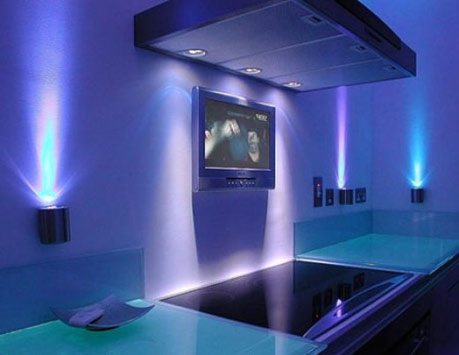


Product Search


Contact Us
Miken.Chang(Sales Manager)
Mobile: +86 13724839064
TEL: (86 20)28940181
FAX: (86 20)34764684
E-mail:miken@Goodpex.com

Types of Bulbs and Lamps for Your Kitchen - Incandescent, Fluorescent, Halogen, LED Lights
Update Time:2010-07-23
Incandescent Lamps – are filament lamps which are found in stores for decades. Color of the emitted light is warm and discreet and can be similar to natural light. The emitted level of light can be easily controlled, because such lamps are available in a relatively wide variety of types (15, 25, 40, 60, 75, 100, 150 W). In addition, the bulbs are found in different shapes and even made from various types of glass. Although the most common are the ones made from transparent or white glass (especially because they ''tame'' the emitted light), there are also glass beads and lamps made of mat, colored glass.

Fluorescent tubes – offer a light similar to the natural light, although not as mild and discreet as that emitted by incandescent bulbs. They cost more but last longer. Over time, you may consider it a true investment. Because they last quite long (even 7 years), fluorescent tubes are ideal for less accessible areas. Besides the usual form (long tube or torus), there are fluorescent lamps shaped like a sphere, which are fitted to many lamps or ceiling. Before buying a fluorescent bulb for a lamp, first check if it fits in the socket and if the sphere is somewhat larger and doesn’t remain hidden behind the lampshade. The advantage is that they don’t heat as much as incandescent bulbs.

Halogen lamps - are newer than the other ones and emit a tough, white light that make colors in the room seem more intense. Though are now widely used and cheaper than in 1990, halogen light bulbs are still expensive compared to the incandescent light. An interesting thing to know about halogen light bulbs is that although they were designed to last longer than others, they are affected by dust and oils / fats (even grease from hands, so it's better to handle them with gloves or other protective material, and not with uncovered hands). In the same way, remove the dust from bulbs with a dry cloth (do this only when the bulb is cold). Halogen lamps heat up very much, so it is advisable that before you change them you need to let them cool.

LED bulbs - use emitting diodes instead of filament bulbs and rare gases which are usually used. LED bulbs provide a directional light, but used in groups, devices that use LEDs are a modern alternative that offer a more qualitative light and consume less than incandescent bulbs. On the other hand, they are much more expensive, but in time, with the evolution of technology, this factor will decrease in importance.

Advantages of LEDs:
* High efficiency - current LEDs can produce 100 lumens using only 1 watt of power
* Small dimensions
* Resistance – compared to fluorescent lamps, LED lamps are more difficult to destroy
* Long life: LED bulbs can be used two times longer (up to 50,000 hours) than fluorescent bulbs and 50 times more than the classic incandescent (1000 hours).
* Lights of variable intensity – is obtained opening and closing the LED with different frequencies
* They don’t contain mercury - an advantage if we compare it to neon

* Resistance: LED bulbs are resistant to shock and vibration, not using a filament like incandescent bulbs. Therefore they can be used in more difficult conditions.
* High efficiency: LED bulbs produce a more powerful light which closer to the concept of perfect white light. It has an efficiency of 700 lumens / W. LED bulbs can reach over 100 lm / W, unlike incandescent offering only 15 lm / W.
* Low power consumption. Probably the main advantage of LED bulb is low consumption or for 10 to 15 times lower than that of a similar bulb incandescent luminescent properties.
* Cold light. LED lamps produce cold light, unlike incandescent lamps that preheat very much, having a very low efficiency (90% of electricity passing through them is transformed into heat and only 10% into light).
| Next: | Kitchen Cabinet Have Many Possibilities |
| Previous: | How To Get The Best Home Lighting |
